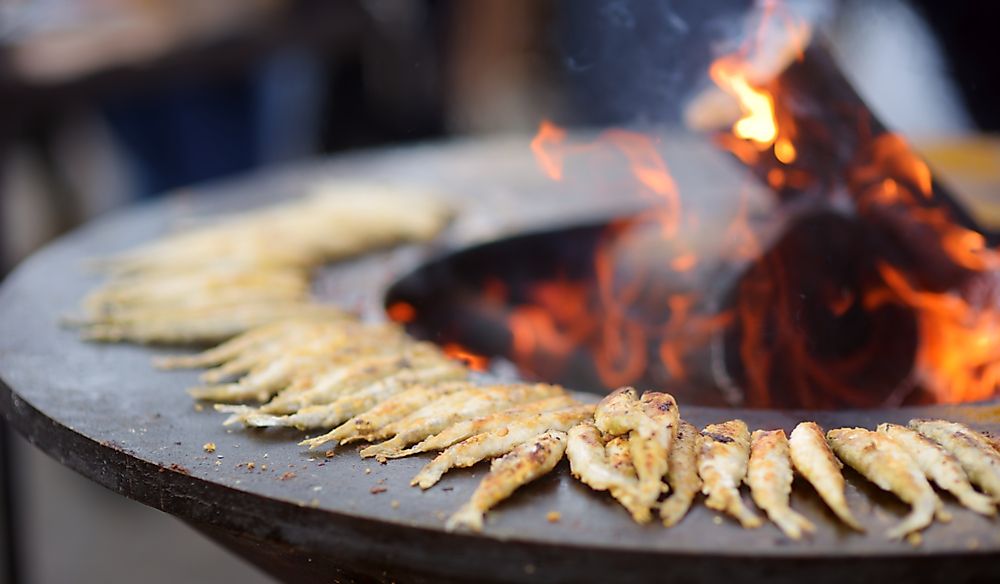The Culture Of Lithuania

The Baltic country of Lithuania has a rich heritage and culture that is influenced by Christian traditions and the cultures of neighboring nations, especially Nordic, Slavic, and Germanic cultures.
6. Ethnicity, Language, and Religion in Lithuania
Lithuania is home to a population of around 2,793,284 individuals. Ethnic Lithuanians comprise 84.1% of the population. Other ethnic communities with a significant presence in the country include Russians, Polish, and Belarusians. Lithuanian, the official language, is spoken by 82% of the population. Russian and Polish are also spoken. Most of Lithuania’s residents (77.2% of the population) adhere to Roman Catholic Christianity. Adherents of the Russian Orthodox Church, Old Believers, Evangelical Lutherans, and others also live in the country.
5. Cuisine of Lithuania
The cuisine of Lithuania is quite similar to the cuisines of other Baltic countries. It is also influenced by other northern European cuisines. Potato, barley, rye, berries, cucumber, beet, radish, dill pickle, mushroom, greens, dairy products, etc., are some of the common ingredients of this cuisine. These products are usually locally grown or produced. Soups are consumed widely and are considered to be the key to good health. Various pickling processes help preserve food for the winter. Dark rye bread is a staple of Lithuanian cuisine and is often consumed for breakfast, lunch, and dinner with other accompaniments. Potato is the most popular vegetable in the country and a great variety of potato recipes exist. Seasonings like caraway seed, garlic, bay leaf, dill, pepper, etc., are used to prepare Lithuanian dishes. Pork is the most frequently eaten meat. Beef, lamb, chicken, baked or stuffed fish, etc., are also consumed. Beer is the most widely consumed alcoholic beverage in Lithuania. A variety of fruit and berry wines and midus (a variety of mead made from honey) are also quite popular.
4. Literature and the Arts in Lithuania
Literature in the Lithuanian language began to appear from the 16th century onwards. Until the 18th century, the literature was mainly of religious nature. The Catechism of M. Mažvydas is known to be the first book to be printed in the Lithuanian language. It was published in 1547. Lithuanian literary works of a secular nature were produced from the 18th century. Dictionaries, grammar rulebooks, and folk songs were among the initial publications of secular nature. Historical accounts of the country began to be recorded in the 19th century. Although the literary works began to diversify, the Communist rule during the Soviet occupation of the country suppressed nationalist thoughts and expressions to a great extent. Today, independent Lithuania’s writers and poets enjoy full freedom to publish their work in various genres ranging from romance to war, nationalism and more.
Like literature, Lithuania also has a rich heritage of art and craft. Religious art initially dominated the art scene in the country. It involved church frescoes, statues of a religious nature, carved wooden crosses, etc. Later, Lithuanian art and craft scene diversified. It was influenced by various themes including nature, culture, nationalism, etc. Today, the important works of Lithuanian art and craft can be observed in the various galleries and museums throughout the country. Souvenir shops catering to the tourist markets also sell Lithuanian art and craft to the international visitors.
3. Performance Arts in Lithuania
Lithuania has a long history of folk music and dance. Flutes, zithers, quadrilles, fiddles, polkas, etc., are primarily used to produce this type of music. The folk songs of the country are based on a variety of themes like romance, wedding, archaic war, traditional work, etc. The rateliai, a type of round dance, is a popular folk dance of Lithuania. Classical and popular music are also popular in the nation. A lively drama scene prevails in Lithuania. Many film festivals are hosted every year.
2. Sports in Lithuania
Football, basketball, athletics, and cycling are Lithuania’s most popular sports. The government of the country promotes sports in the nation and supports the country’s talented sportspersons through financial and other aid. The Lithuanian Academy of Physical Education has been established to educate sportspersons and trainers in their respective games. The country’s athletes have participated in many Olympic Games and have won medals on several occasions. The national football, basketball, and rugby union teams of Lithuania have participated in several international competitions in their respective games.
1. Life in the Lithuanian Society
The Lithuanian law grants equal rights and freedoms to the country’s men and women. Discrimination on the basis of gender in the workplace is illegal. However, although women constitute nearly 50% of the workforce, men receive better pay or are employed in more high-salary jobs than women. Education, health, social service, etc., are some of the areas where women have a large presence.
Marriages in Lithuania are usually based on consensual choice. There are two components to such marriages, religious and legal. Most marriage ceremonies thus include a religious union in a church accompanied by the registration of the marriage at the municipal wedding hall. Although the age of marriage in Lithuania is lower compared to countries in Western Europe, the age is slowly increasing as more and more women are seeking higher education and better jobs. Lithuanian households are generally nuclear in nature comprising of the married couple and their children if any. Women still do most of the household chores like cooking and cleaning even when they work outside the home. Child rearing is also traditionally the mother’s responsibility. Although paternal leaves are allowed in the country, few men take such leaves.
Education in the country is either free or highly subsidized. Thus, literacy levels are quite high. In recent years, higher education has become more important to get a good job.
Lithuanians are generally reserved people. They are very respectful of their traditions. They usually do not look directly at someone in a public conveyance unless the person is known to them. Lithuanians are also good hosts and make great efforts to make their guests feel comfortable.











